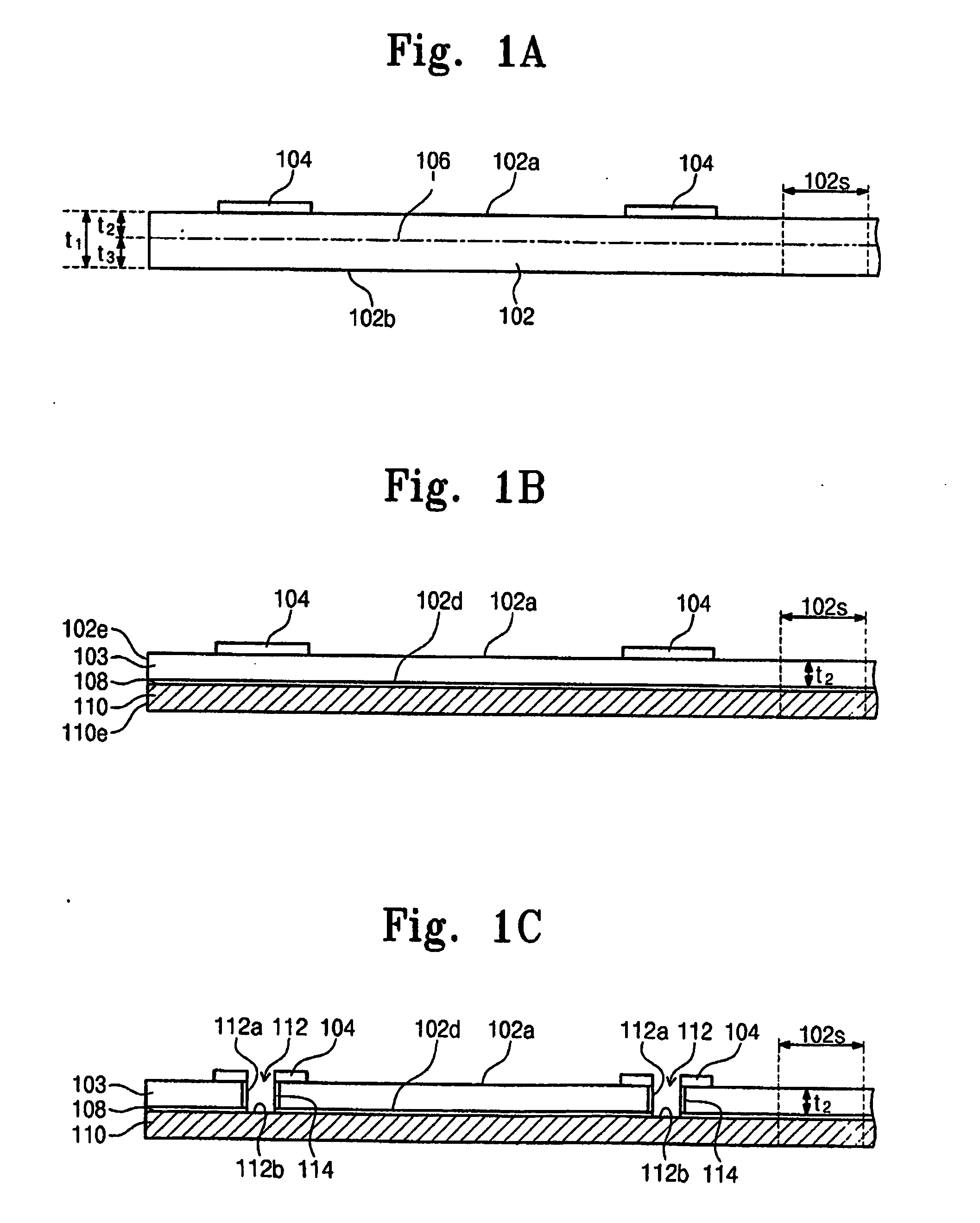Method of fabricating a 3-D device and device made thereby
a three-dimensional device and device technology, applied in the direction of semiconductor devices, semiconductor/solid-state device details, electrical devices, etc., can solve the problem that existing packages, however, may not meet all of the above-described requirements for next-generation devices
- Summary
- Abstract
- Description
- Claims
- Application Information
AI Technical Summary
Problems solved by technology
Method used
Image
Examples
first embodiment
[0036]FIGS. 1A through 1E illustrate cross-sectional views of stages in a method of fabricating a chip package, e.g., a wafer level package, for a 3-D device package according to a Referring to FIG. 1A, a wafer 102 having a thickness ti may be prepared. The wafer 102 may include, e.g., conductive pads 104 for providing connections, e.g., signals, power, ground, etc., to devices formed on an active surface 102a of the wafer 102. The devices may include transistors, resistors, capacitors, etc. The wafer 102 may be, e.g., a semiconductor wafer, an opto-electronic wafer having optical and electronic devices thereon, etc. The wafer 102 may include a plurality of device patterns replicated thereon and corresponding to individual dies. The wafer 102 may be designed with scribe lanes 102s, i.e., dicing lanes, to facilitate separation of the wafer 102 into individual dies.
[0037]The wafer 102 may be processed to remove a predetermined portion of its thickness from a rear surface 102b thereof...
third embodiment
[0054]FIG. 3 illustrates a chip package 100a according to a Referring to FIG. 3, each of the connection pads 110a and 110b may extend laterally away from the respective through-hole electrodes 117a and 117b so as to redistribute the pad connections. Thus, a pitch of the connection pads 110a, 110b may be enlarged relative to the pitch of the corresponding connections to the thinned wafer 103. In an implementation, a heat sink 110c may also be formed in, e.g., a central region of the thinned wafer 103, by patterning the carrier 110.
fourth embodiment
[0055]FIG. 4 illustrates a chip package 100b according to a Referring to FIG. 4, each of the connection pads 110a and 110b may be arranged directly below the corresponding through-hole electrodes 117a and 117b. The connection pads 110a and 110b may be used to couple to corresponding pads on an adjacent chip package, as described below. In an implementation, one or more heat sinks 110c may also be formed, e.g., in central and peripheral regions of the thinned wafer 103, by patterning the carrier 110.
PUM
| Property | Measurement | Unit |
|---|---|---|
| aspect ratios | aaaaa | aaaaa |
| electrically insulating | aaaaa | aaaaa |
| semiconductor | aaaaa | aaaaa |
Abstract
Description
Claims
Application Information
 Login to View More
Login to View More - R&D Engineer
- R&D Manager
- IP Professional
- Industry Leading Data Capabilities
- Powerful AI technology
- Patent DNA Extraction
Browse by: Latest US Patents, China's latest patents, Technical Efficacy Thesaurus, Application Domain, Technology Topic, Popular Technical Reports.
© 2024 PatSnap. All rights reserved.Legal|Privacy policy|Modern Slavery Act Transparency Statement|Sitemap|About US| Contact US: help@patsnap.com










